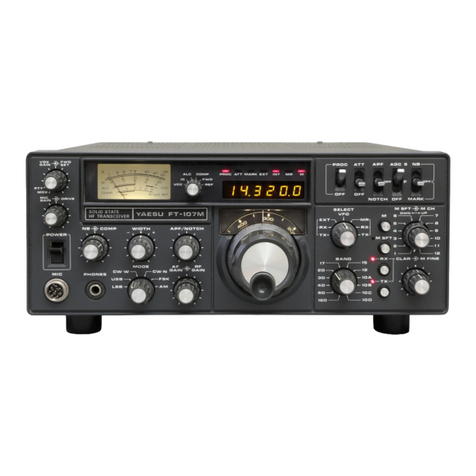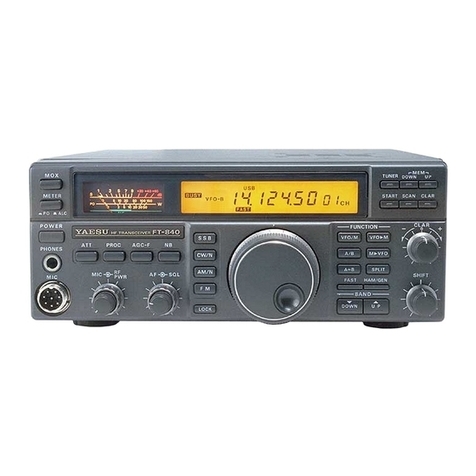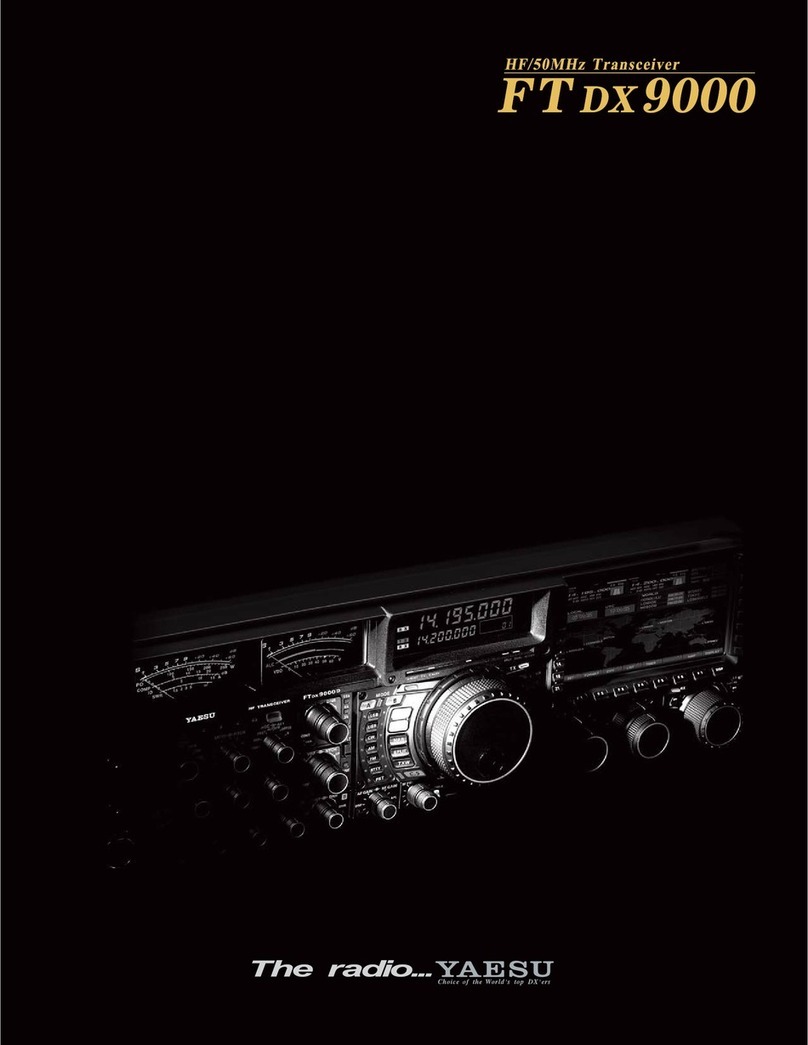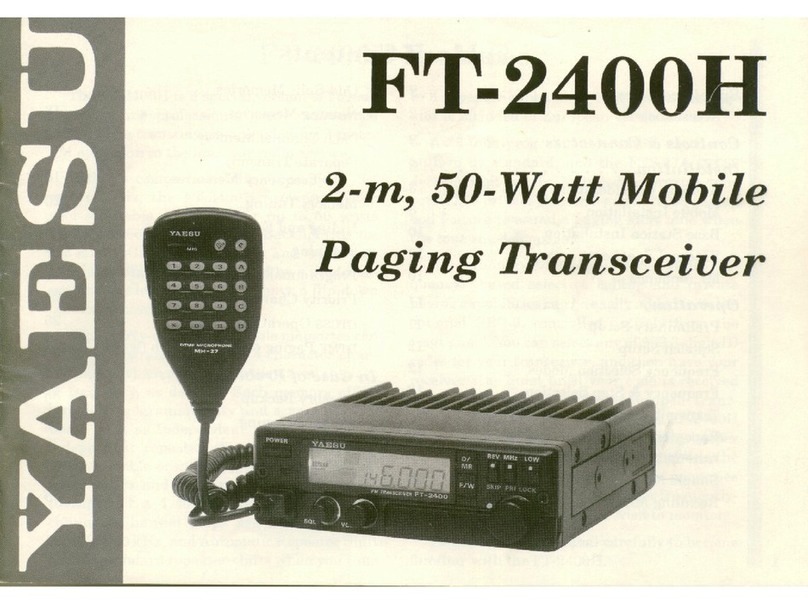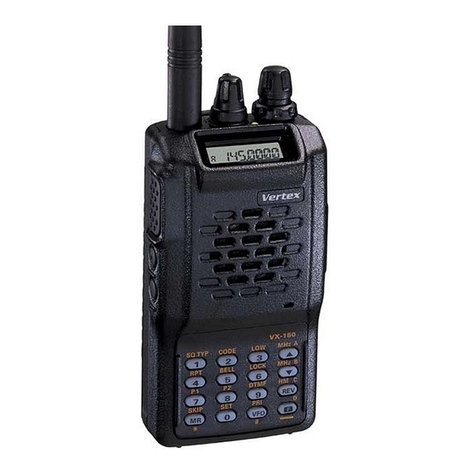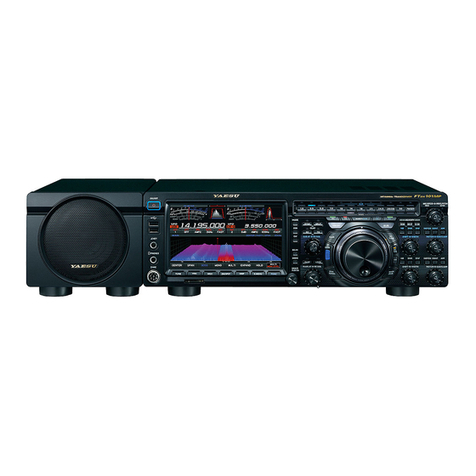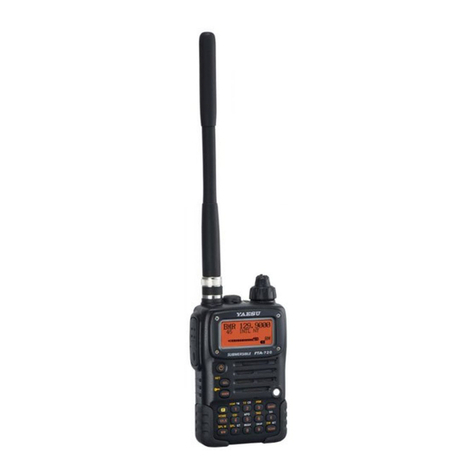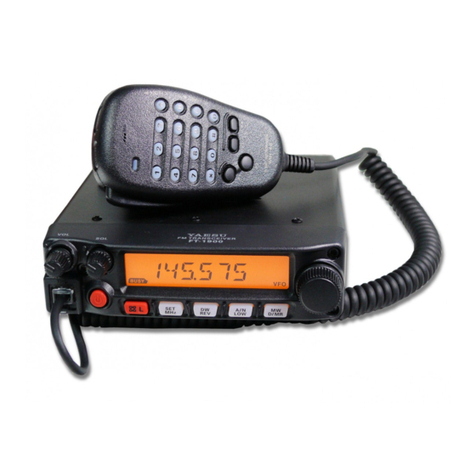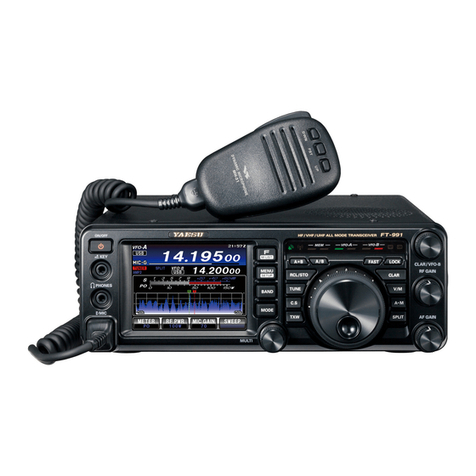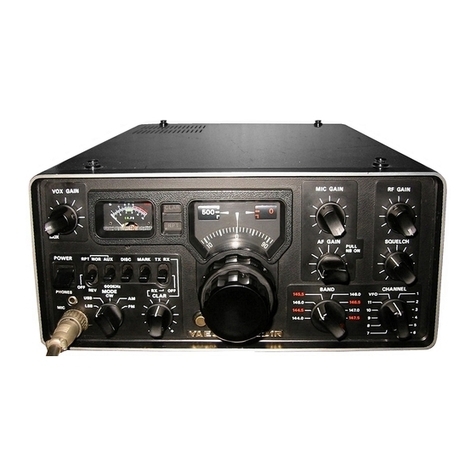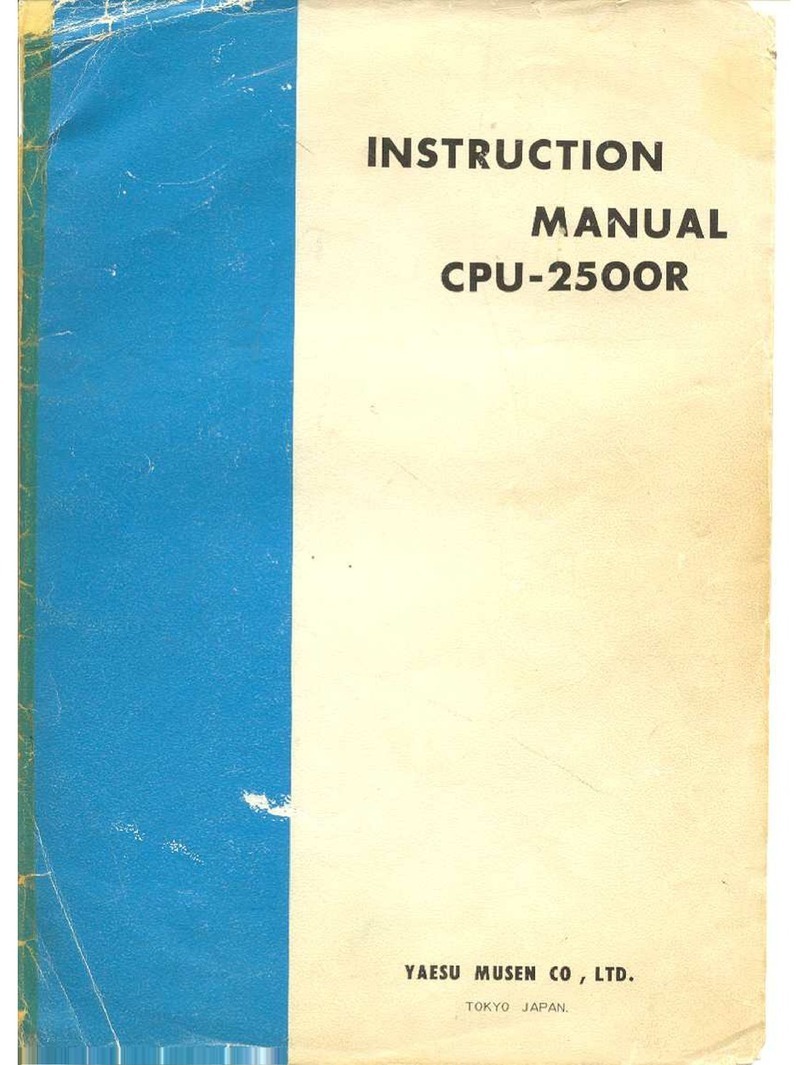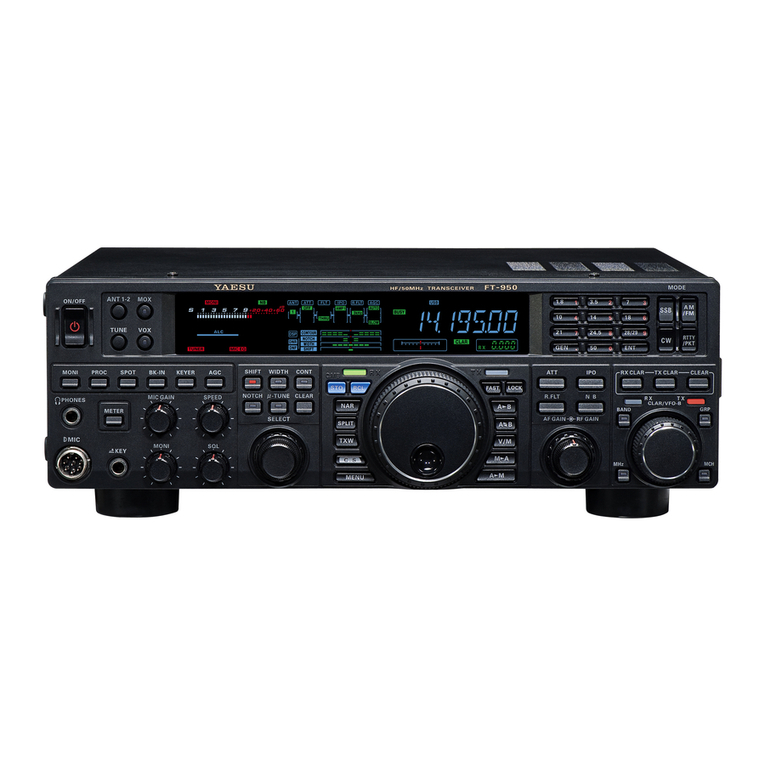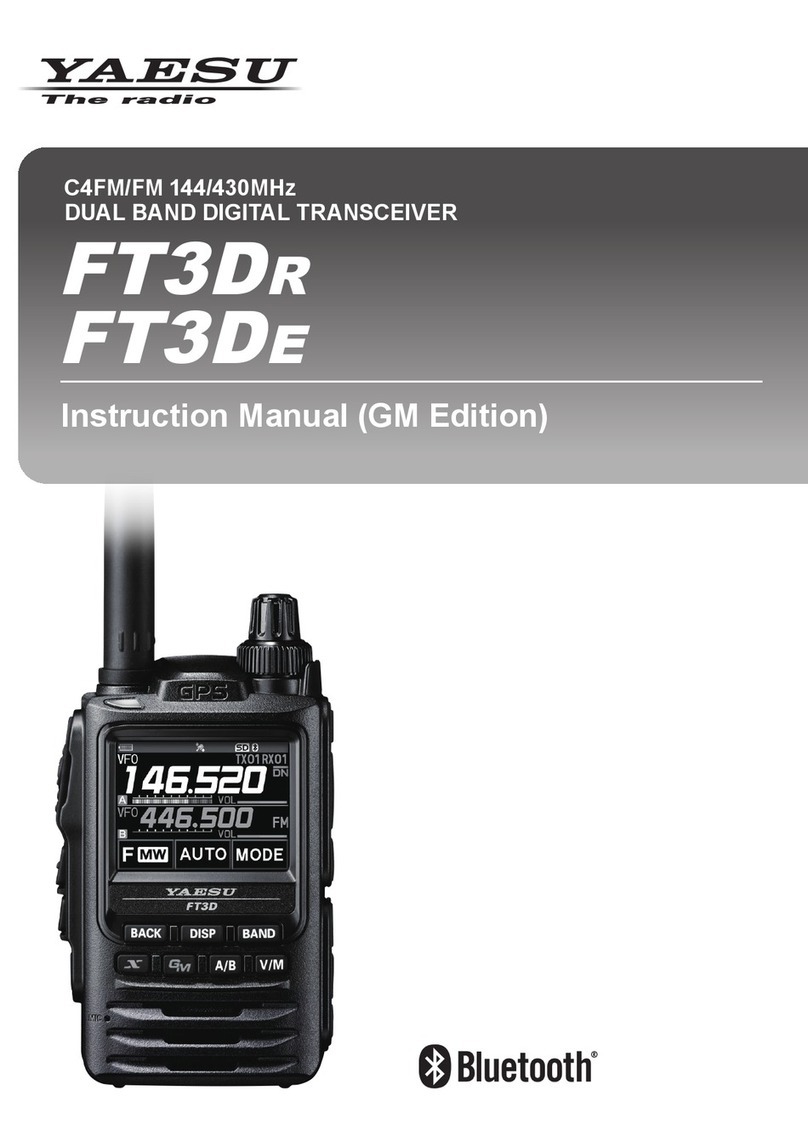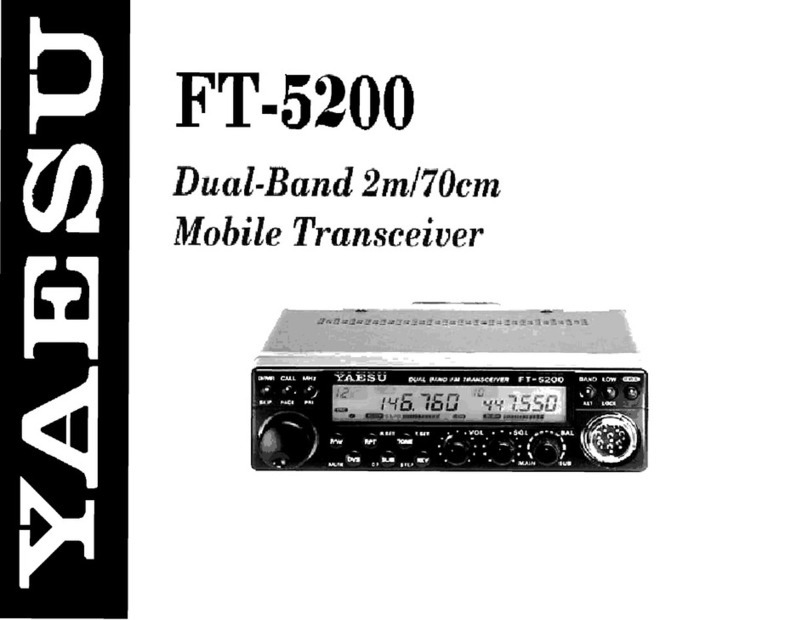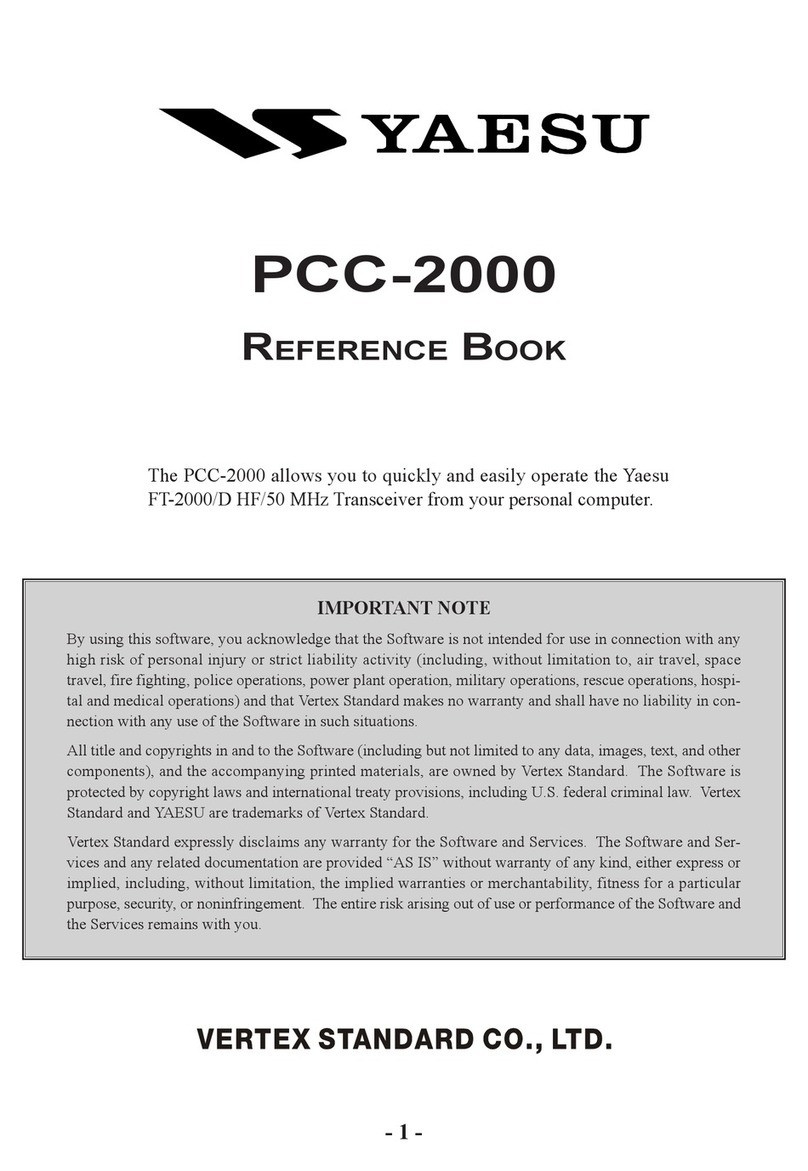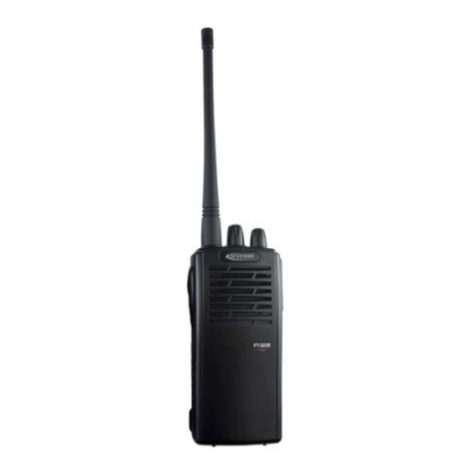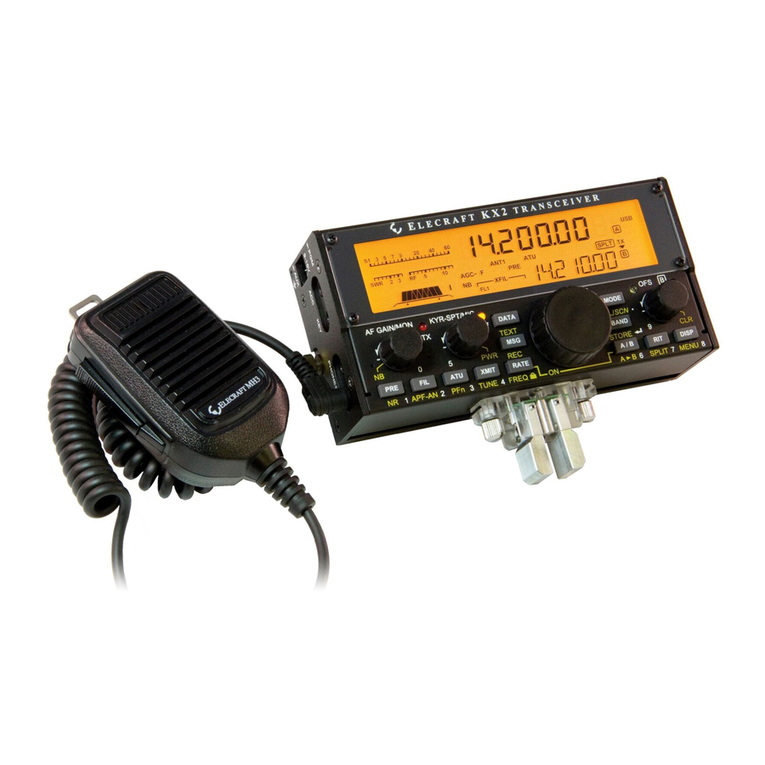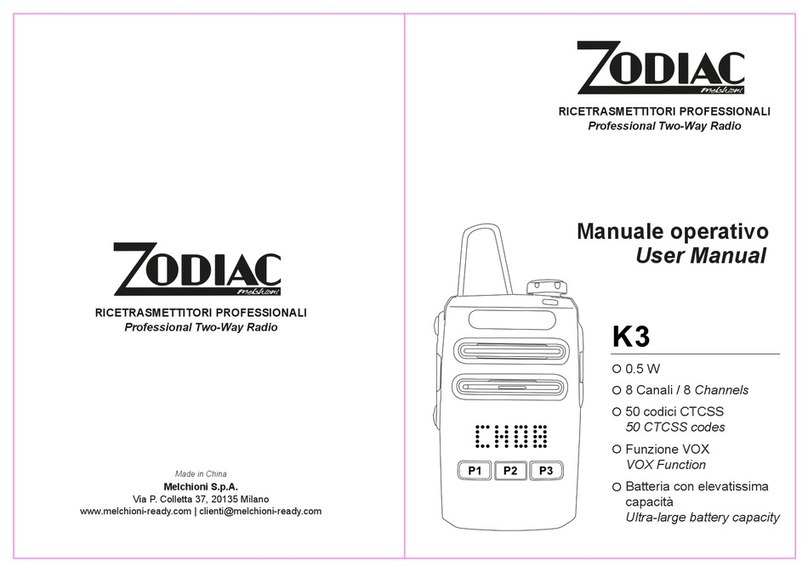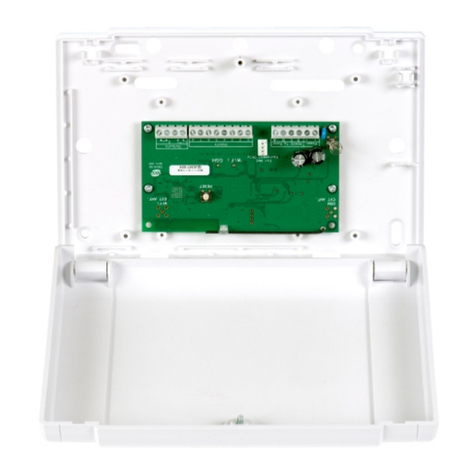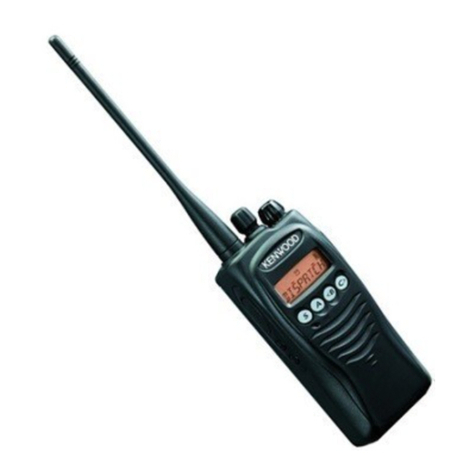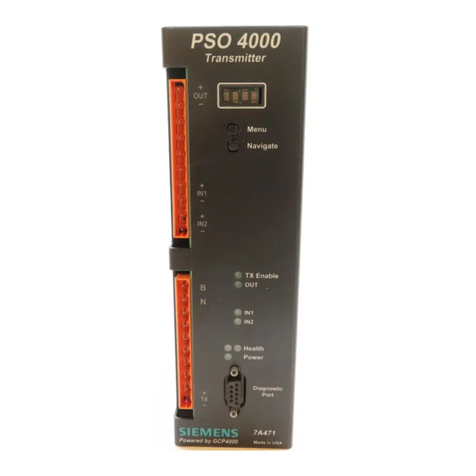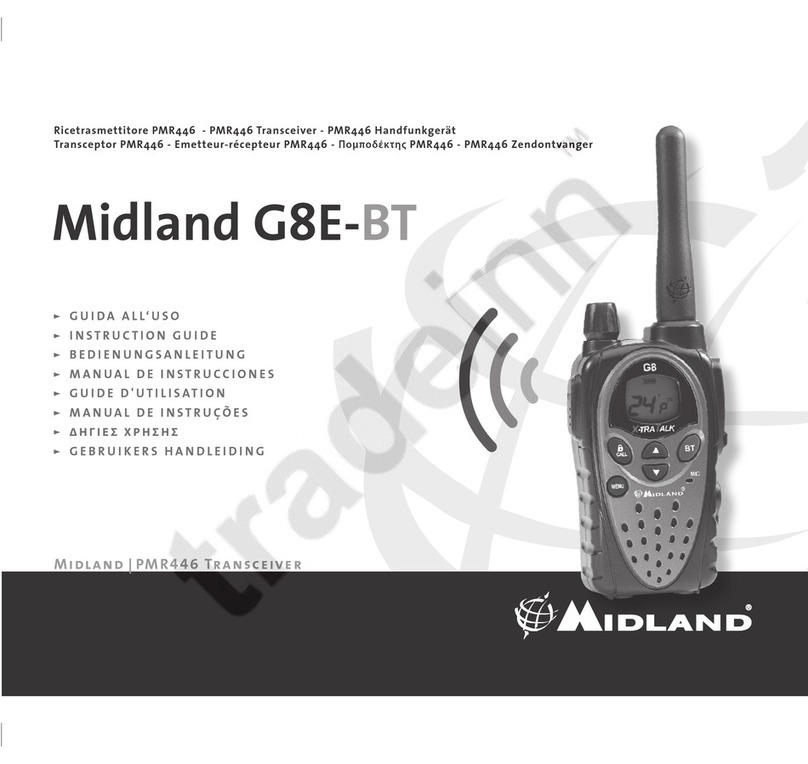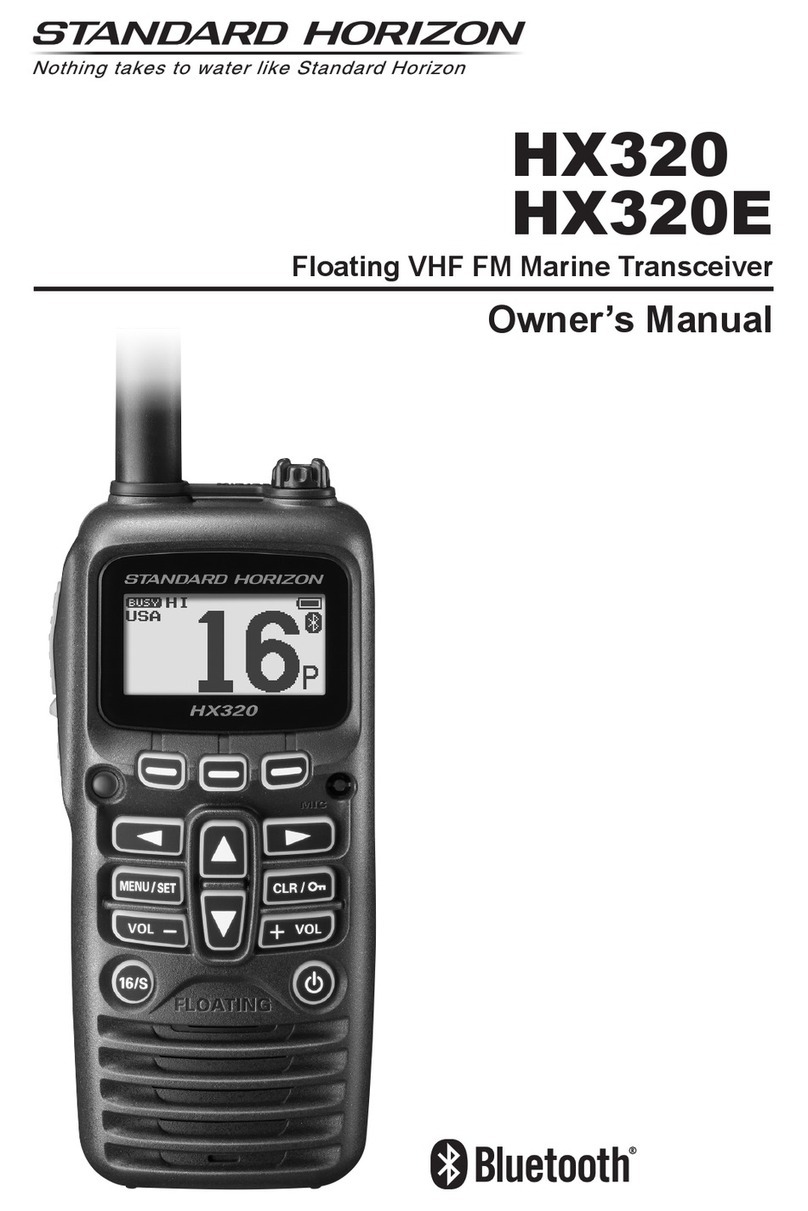Twin VFOs and
40
programmable memories
(including an instant
-
recall Call channel) are
available on each band. Memories can be tagged
with an 8
-
character alphanumeric name and this
name can be displayed instead of the frequency
(the naming feature can be turned off to expand
memory capacity to 60 per band, if desired).
Searching for station activity has never been
easier with VFO, memory and programmed-
limit (sub
-
band)scanning and the new spectrum
scope feature. Select all or only those memories
you want to be scanned. When activity is found,
scanning can be set to halt, resume after 5
-
sec
-
onds, or resume when the stationstops transmit
-
ting. One memory on each band can also be
enabled for priority monitoring. The built
-
in
CTCSS (Continuous Tone
-
Coded Squelch Sys
-
tem) provides 39 subaudible tones which can be
stored in each memory independently. The
CTCSS Bell feature can be set to ring when the
tone squelch opens.
A wealth of selective DTMF calling and pri
-
vate paging features allows for quiet monitoring
until calls directed to you (or only stations in
groups you select) are received. In addition,
DTMF messages up to twelve characters long
can be sent to other stations. Received messages
are displayed and automatically stored for later
retrieval. A tri
-
mode ringer alerts you to calls or
messages by sounding a preset or user-pro-
grammed melody, or else have the built
-
in CW
decoder announce the message in Morse code!
The FT
-
51R can even respond to or relay (for
-
ward) paging calls when you are absent. For
autopatch operation, a 10
-
memory, 15
-
digit
DTMF autodialer stores frequently
-
called num
-
bers for playback.The DTMF autodial memories
can also be tagged with alpha
-
numeric names.
Full power output is available with only a
9.6
-
volt battery, and a wide range of features
ensure maximum operating time: The ABS
(Automatic Battery Saver) monitors operating
history and optimizes save duration accord
-
ingly;
Tx
Save automatically reduces transmit
power during periods of high receive signal
strength; selectable
-
period APO (Automatic
Power Off) timer turns off the radio after a pe
-
riod of inactivity; and selectable continuous or
5
-
second LCD and keypad illumination.
Although you are probably anxious to begin
operating the FT-51R, please take some time to
carefully review this manual thoroughly and fa
-
miliarize yourself with the FT
-
51R.

